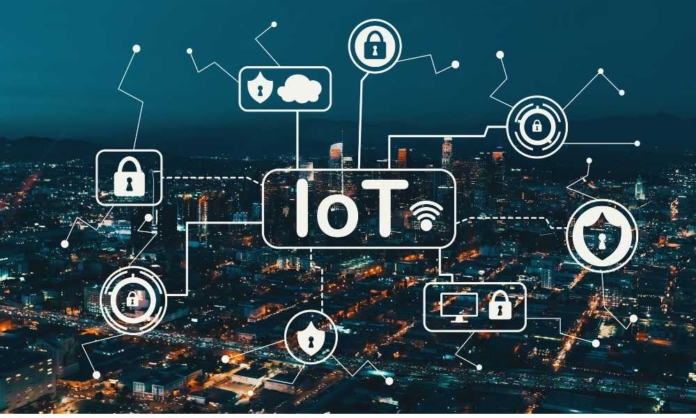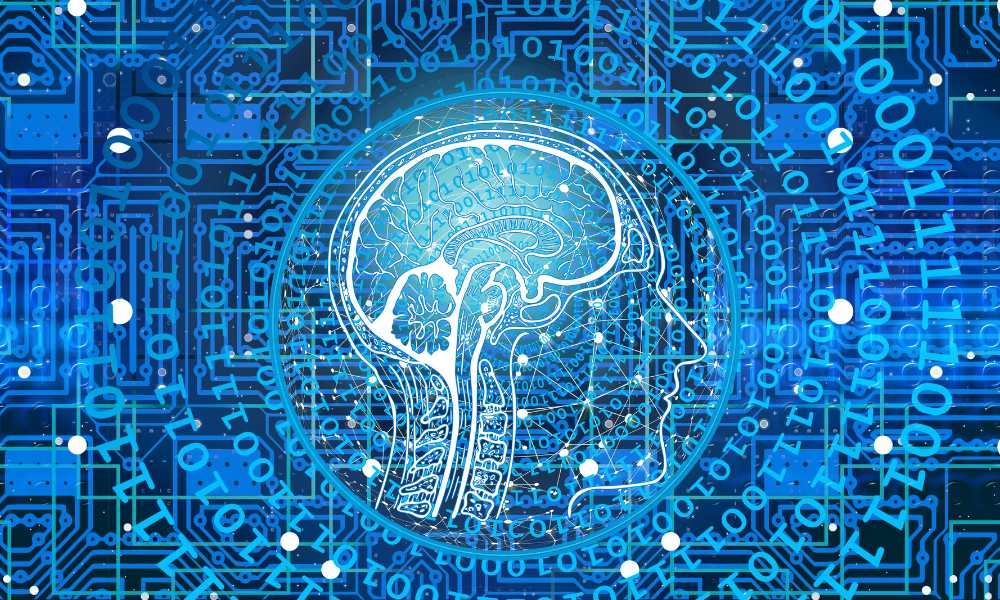If you are curious about the deployment of Industrial IoT Solutions, you are aware that this process is expanding globally at a rapid rate. According to McKinsey Digital, 127 gadgets will connect to the Internet for the first time every second in 2021, and the value of intelligent factories in North America alone will exceed $500 billion by 2022.
This development is hardly surprising given that EIoT adoption enables previously unreachable levels of worker safety and new business models, and, consequently, new revenue streams. Using IoT devices, you will be able to obtain additional information about industrial processes, employee and customer behavior, and data that will aid in predicting equipment faults and preventing equipment downtime. Sounds enticing? All of these benefits are realizable, but they are contingent on the organization’s capacity to estimate the risks associated with EIoT adoption accurately.
Ericsson expects that there will be approximately 30 billion IoT devices worldwide by the end of 2022. It is only a matter of time before the Internet of Things “invades” the entire planet. Certainly, every organization must determine if EIoT implementation will be an integral part of its future business plan. However, once a decision has been made, it is crucial not to delay implementation for “better times.” Instead, businesses should examine the risks and think clearly about the Industrial IoT solutions they will employ as soon as possible.
When evaluating the adoption of an IoT ecosystem, some risks must be considered, such as the possibility of hardware faults and economic costs. However, nearly all of these hazards may be eliminated with a transparent company plan, well-defined objectives, and an accurate cost-benefit analysis of implementing Industrial IoT. It is not inexpensive to change an ordinary factory into a smart factory, but it will be much more beneficial for your organization to avoid typical mistakes from the outset, as opposed to having to repair them after implementation. Here, we examine the most prevalent hazards to avoid during IoT ecosystem implementation.
Business Expectations and Industrial IoT Solution Implementation
According to a Cisco report, only 26% of organizations judged their IoT activities to be effective a few years ago. It indicates that their expectations were not satisfied or that the costs of implementing new technologies were not justified. In addition, the complexity of an EIoT project is frequently overestimated, which delays implementation at the POC stage. Consequently, the company is going to suffer.
How to Avoid Extra Expenses
It is crucial to recognize that the move to the IoT ecosystem is a complex procedure that will impact business models, personnel, and Enterprise architecture. Therefore, it is essential to entrust qualified managers with creating a plan and implementing the IIoT. For the IoT implementation, managers will assist in defining the required outcomes prior to the start of the project, as well as assembling a qualified team of engineers and optional specialists such as data scientists, computer scientists, and statisticians.
EIoT projects must always address specific business concerns, which must be identified prior to the implementation of Industrial IoT Solutions. When considering the use of IoT in a business, we recommend focusing on the following:
- Improving the product quality
- Maximising equipment efficiency
- Increasing production cycle speeds
- Increasing the enterprise’s overall safety and security
Identify priority areas, existing obstacles, and long-term objectives. Ensure that you define the KPIs you intend to achieve. The company’s business objectives should be reasonable and attainable to ensure that your expectations match the actual results of executing the intended solution.
Despite the fact that the installation of the IoT ecosystem must minimize human input, individuals will nonetheless need to master new working conditions. Consequently, the next critical step is to discuss all potential business changes, allocate roles to humans and machines, and train the team to operate inside a new business and technical model.
Programming and Compatibility Issues
Enterprises with a large percentage of machine production typically use Industrial Internet of Things solutions. Implementing the IoT ecosystem with modern equipment is typically simpler for well-funded businesses. For some, though, the cost of replacing legacy manufacturing systems might be prohibitive. Therefore, businesses frequently opt to adapt current equipment by adding sensors, intelligent devices, and gateways. However, when deciding to adopt IoT technology in an enterprise with aging machines, the business must ensure that all devices can comprehend the protocols used to connect different data storage and resolve all compatibility difficulties. According to McKinsey, a corporation transitioning to EIoT must address compatibility issues for approximately fifty percent of all devices. If compatibility issues are not effectively resolved, the solution may not perform as intended or at all.
The erroneous algorithm or integration can result in hardware problems, equipment damage, overheating, explosion, or system failure. These concerns can lead to disruptions in the manufacturing process, reputational risks, lawsuits, and, in the worst-case scenario, work-related accidents. Incorrect programming or incompatibility issues affect not only the IoT ecosystem but also other interconnected devices.
How to Address Device Compatibility Concerns
As with business expectations, it would be preferable to develop a comprehensive EIoT implementation plan in order to reduce the likelihood of solution incompatibility and improper programming. Since any electromechanical device can be incorporated into the EIoT ecosystem, it is necessary to determine if it is more financially advantageous to integrate old equipment into the IoT system or to replace it with new equipment. Additionally, a solution for equipment should be chosen based on particulars. You must have the following information in your implementation plan:
1. Existing Technologies and Equipment
Evaluate the condition of the equipment, the date it was obtained, its degree of efficiency, operating expenses, and the enterprise’s existing automation procedures. This can assist you in comprehending which areas of the production process need improvement.
2. Data Collection
How your organization collects and handles data? As well, how would you prefer it to be? Determine whether it would be more productive to build a new solution or to implement the current one.
3. The Partner Companions
Select the top development partners and vendors. They may assist you in developing software products that enable a safe and interoperable IoT ecosystem within their environment.
Keep in mind that hardware failures might occur not just within the organisation that has installed corporate IoT solutions, but also elsewhere. Therefore, you should pay more attention to the quality of Industrial IoT solutions that can be deployed by external partners and avoid experimenting with unreliable solutions. Qualified EIoT managers may assist businesses in selecting the optimal solutions.
4. Real Issues
Additional equipment, devices, controllers, transmitters, and computers may be required for IoT ecosystem implementation. Therefore, after implementing EIoT, you will need to handle more pieces of equipment.
To avoid issues with servicing new devices, we recommend hiring technicians with experience working with IoT devices. Existing personnel should also be trained to operate the new equipment. This technique will reduce challenges associated with IoT device maintenance and existing equipment management.
5. Data Security Risks
Along with cost, the risk of data loss is one of the primary reasons why businesses delay the transition to an IoT environment. This is obvious, as deploying a VPN alone is insufficient for IIoT security. Theoretically, by getting access to a single device on the EIoT network, an intruder may cripple the organization as a whole. For instance, a disgruntled former employee may modify devices or steal sensitive information. Therefore, security must be considered at each level of the Internet of Things, from the individual device through edge computing and the cloud. To ensure the integrity of the entire system, ensure that all Industrial IoT solutions adhere to the strictest safety requirements. Contacting EIoT security specialists for an assessment is preferable.
Unfortunately, enterprise IoT solution developers do not always make safety requirements available. Therefore, you must perform a security risk assessment. Consider the security degree of these access points while deciding on a solution.
- Locally hackable sensors and actuators
- Communication systems that facilitate data transfer
- Computer storage infrastructure
- The software that interprets data on a computer.
What measures can you take to prevent intruders from accessing your devices? In addition to encrypting the data, we recommend establishing secure data connections to secure remote access and cloud services to on-premises resources. By utilizing a local network, you may limit the dangers associated with the most sensitive data. The internal network prevents anybody outside the organization from gaining access to the data. Provide modern IIoT devices and systems with unique identifiers and credentials, and implement authentication and access control mechanisms. Additionally, physical security measures may be required to guarantee that only authorized personnel has access to IoT-enabled machines and programming tools.
In order to prevent data loss, the organization should also provide the IoT ecosystem with a backup power source, such as an uninterruptible power supply, built-in batteries, or solar panels. Moreover, in the event of network failure, the devices will cease transmitting data, as will the entire production process.
Risk of Control Loss: Can AI Replace Humans Utilizing Industrial IoT Solutions?
The widespread use of AI will undoubtedly result in losing human control over the production process. By integrating AI-based industrial IoT solutions, you should define responsibility boundaries for human and artificial intelligence.
Artificial intelligence is the foundation for enterprise IoT solutions such as deep learning, computer vision, machine learning, natural language processing, and Big Data analytics. As more complicated judgments are delegated to AI, the issue of relinquishing control becomes increasingly pressing. Therefore, the issue arises: which crucial management functions can be delegated to AI without compromising the company’s decision-making process?
Regarding the design of business strategies and the development of enterprise architecture, human-machine interaction is more efficient than machine-machine interaction. This is due to the fact that machines are flawless when dealing with complete data on routine tasks, whereas humans are able to make responsible decisions in atypical and important circumstances. Moreover, only people are capable of providing solutions based on high-quality concepts when innovation is required. Consequently, while analyzing the AI functional limits of your future IoT business, you should estimate the following:
- How mechanized are your manufacturing process’s operations?
- What new manufacturing procedures do you intend to deploy following EIoT implementation?
- If the delivered Industrial IoT Solutions has self-learning capabilities
Another issue arises in this context: What odds that machines will ever replace humans? This is unlikely to occur within the foreseeable future. Can a person lose total control of the production process due to a significant error? It is not easy to forecast the repercussions of this possibility. Therefore, to maintain human management and increase corporate productivity, you need to strike a balance between machine functioning techniques and human intelligence.
Conclusions
At least for the foreseeable future, machines will not replace humans in production, although they will perform a variety of tasks. Whether you wish to migrate the entire plant to EIoT or smarten the production process in part, it makes no difference. In any case, you should integrate the IoT ecosystem strategically:
- Analyze the enterprise’s assets to determine their EIoT potential.
- Establish business objectives that can be attained using EIoT solutions.
- Employ qualified personnel for project deployment
- Before migrating to the IoT ecosystem, check the development partners and solutions.
The investment in EIoT may take time to pay off, but if you manage the EIoT implementation process professionally, you have a good chance of reaping enormous benefits unavailable to the business before EIoT adoption.




